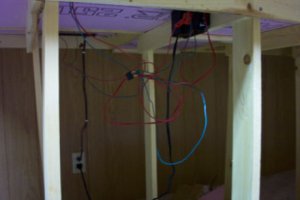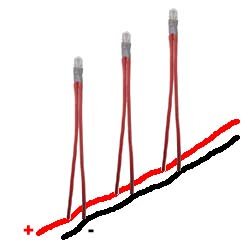Help For Val
- Thread starter eightyeightfan1
- Start date
You are using an out of date browser. It may not display this or other websites correctly.
You should upgrade or use an alternative browser.
You should upgrade or use an alternative browser.
LOL!!!
Then mine is probably considered to be tidy and organized! I've used terminal strips and attached those U shaped things to my feeders so I can hook them up to my "bus". I used a metal strip to join the terminals together and have one for (+) and one for (-). I hope that last sentence didn't get converted into a smiley!
Then mine is probably considered to be tidy and organized! I've used terminal strips and attached those U shaped things to my feeders so I can hook them up to my "bus". I used a metal strip to join the terminals together and have one for (+) and one for (-). I hope that last sentence didn't get converted into a smiley!
By the way...
Val was asking about wiring light bulbs. She was concerned about one bulb blowing out and then losing power to the other bulbs. I responded that as long as she wires them in parallel (rather than in series) this shouldn't be a problem.
I sent her this cheesy diagram as an aide. I hope I didn't make a boo-boo?
Val was asking about wiring light bulbs. She was concerned about one bulb blowing out and then losing power to the other bulbs. I responded that as long as she wires them in parallel (rather than in series) this shouldn't be a problem.
I sent her this cheesy diagram as an aide. I hope I didn't make a boo-boo?
Attachments
No boo boo there. I wire 2 lights in series and each group of 2 is wired in parallel. This cuts the voltage in 1/2 to each bulb and they hardly ever burn out. I picked this up a while back on the Gauge.
Val,Girl,You are using DCC you don't really need any blocks.You can run a bus wire and drop feeder wires every 6-8 foot .Now the simplest way to do block wiring if you ready need blocks then the Atlas Selector is easy to wire and use.However one of the joys of DCC is you don't really need to use blocks except perhaps in your engine terminal and of course your programing track..
Didn't see Val's chat room question, but for what it's worth, a standard silicon diode (1N4002 or similar from radio shack) in series between an AC source and a group of small incandescent bulbs in parallel will cut off every 2nd 1/2 cycle of the AC power and cause the lamps to glow at half normal brightness. Increases their life by 4 times and makes for a nice yellow glow instead of glaring white.



